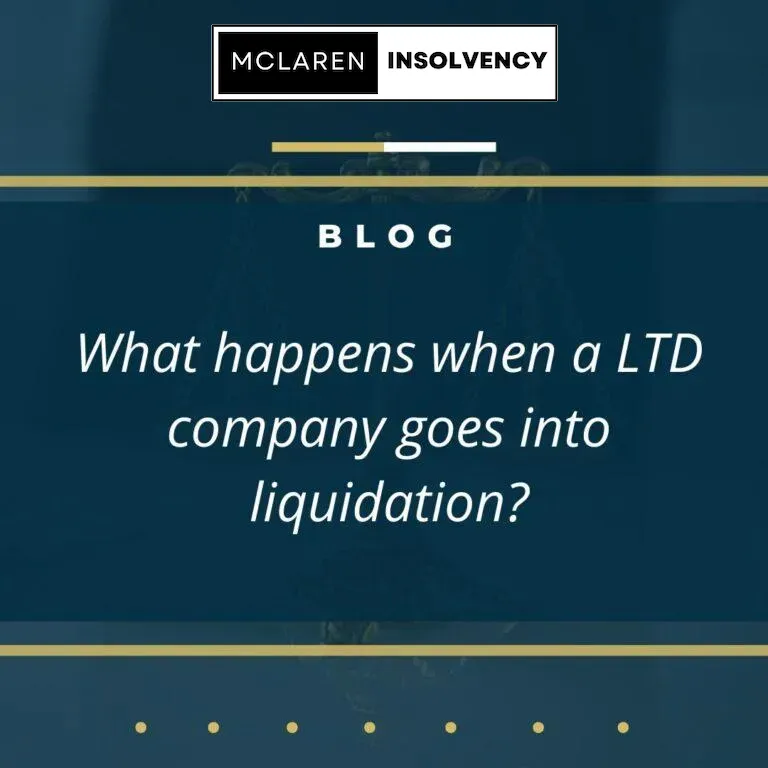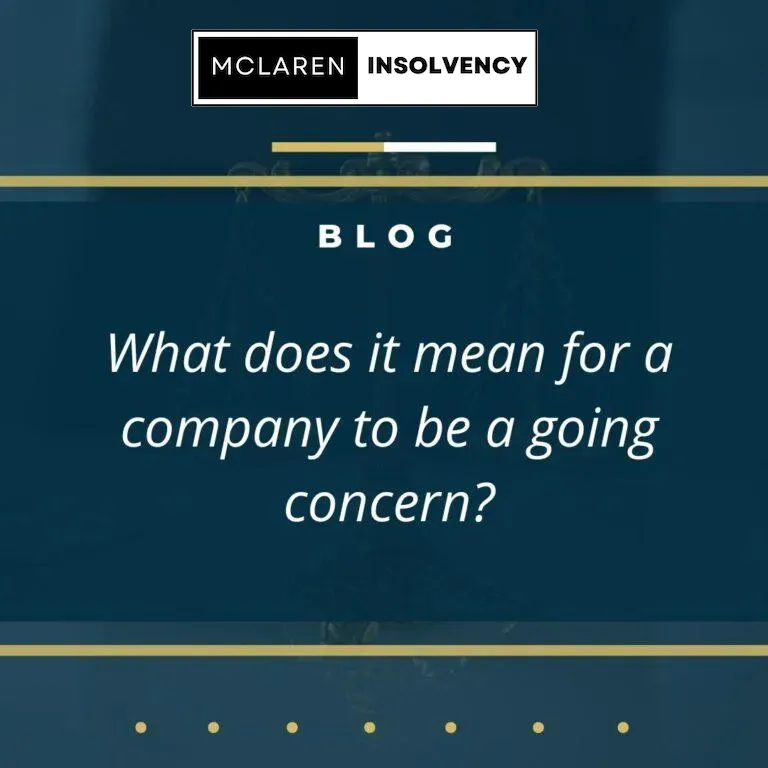What is a Members Voluntary Liquidation (MVL)
The goal of a members’ voluntary liquidation (MVL) is to wind up a solvent limited company and distribute the assets to the owners as capital rather than income, resulting in lower personal tax rates.
Shareholders, understandably, want such distributions and business dissolution to happen as soon as possible after the appointment of an insolvency practitioner (IP). We look at how long this generally takes, what needs to happen to make it possible, and how accountants and company directors can help speed up the liquidation process.
Members’ Voluntary Liquidation (MVL)
The acronym MVL refers to Members Voluntary Liquidation. A Members Voluntary Liquidation (MVL) is a formal process used to wind up the affairs of a solvent company. A solvent company is one that has more assets than liabilities and can thus repay all of its debts.
An MVL consists of members of a company and their assigned Insolvency Practitioner (IP). The company in question will be dissolved upon completion of the MVL. During this time, the IP will first settle outstanding debts, legal challenges, and pay outstanding creditors with earnings and asset sales. The remaining funds will subsequently be distributed among the members.
MVLs are often picked because they can provide tax benefits, such as allowing capital gains tax rather than income tax, through business asset disposal relief. In some instances, members may be eligible for Business Asset Disposition Relief (formerly known as Entrepreneurs Relief), which can reduce the tax rate to 10%.
What exactly defines a ‘member’?
A member is essentially a shareholder in a company. They have a say in business management and are considered part of the company. Before a formal insolvency process, such as a Members’ Voluntary Liquidation (MVL), may be initiated, members must agree to wind up the company.
Why do we use an MVL?
While the MVL process allows the business to be wound down and dissolved lawfully, provided the required HMRC criteria are met, there are a number of potentially significant tax benefits that a Members’ Voluntary Liquidation can bring to shareholders.
When a company’s cash or asset reserves exceed £25,000 after all creditors have been fully reimbursed, it is more tax-effective to place the company into an MVL. Tax is imposed at a 10% rate, in contrast to stockholders receiving the funds as dividends, which are considered “income” for tax purposes and hence payable at up to 50%.
When should you use an MVL?
An MVL is eligible for use when the company is still solvent and capable of meeting its contractual commitments and/or debts, as well as resolving any legal disputes. The company’s affairs must be in order, and all documents must be ready for McLaren Insolvency Practitioners when the MVL proceedings begin.
There are several reasons why members recommend that a company be liquidated while it is still solvent, including:
Shareholders choose whether to pass a ‘winding-up resolution’ and place the company in voluntary liquidation, thereby losing control of the company.
Within 15 days after the shareholder vote, the winding-up resolution is filed with Companies House.
A notification must also be placed in the Gazette within 14 days.
In accordance with the statutory hierarchy of repayment, assets are realised and proceeds are allocated among creditor groups.
The directors’ actions leading up to the insolvency are probed for instances of unlawful or illegal trade and their impact on the financial position of the company.
How exactly does an MVL work?
When creditors threaten legal action against a company and there is no realistic possibility of a real business rescue or recovery, entering into a Creditors’ Voluntary Liquidation is typically in the best interests of all parties involved.
This process maximises creditors’ potential for a return because all company assets will be sold as part of the process. The appointed liquidator works on behalf of all creditors, not just the directors of a company, and their primary responsibility is to collect and realise all firm assets, informing unsecured creditors accordingly. Placing a company into a CVL does come with a fee attached, however, this cost may be eclipsed by potential director redundancy claims.
CVL Timeline
MVL procedure
McLaren Insolvency Practitioners requires the following information:
Once the IP has been appointed to help with the liquidation, directors, shareholders, and business accountants will be given a list of information requests. This will include things like:
Bank details
HMRC references
Identification documents
Asset and liability details in the context of voluntary liquidations.
A declaration of solvency
A solicitor must be present when a Declaration of Solvency is prepared and sworn. The Declaration of Solvency is essentially an up-to-date account of assets and liabilities that demonstrates the company’s solvency. When there are multiple directors, all or most of them must sign the document.
This indicates that the company commits to repay their obligations within the next 12 months as part of the liquidation process. The company must be able to repay creditors within this time frame in order to remain viable throughout the MVL process or face significant disruptions.
Liquidator’s appointment
Following the signing of the Declaration of Solvency, shareholders conduct meetings to approve the required motions and confirm the appointment of a Liquidator.
From the moment the company is placed into MVL until the liquidator pays the debts, creditors are entitled to statutory interest at a rate of 8% above base. As a result, it is common for the company to pay off its creditors before appointing a liquidator in order to save this interest.
A liquidator will advertise for further claims as soon as they are appointed, giving creditors at least 21 days to furnish data before distributing funds to shareholders.
Winding up the business
The company is wound up once the MVL is approved by 75% of the members/shareholders. This includes the following:
The Liquidator published the post in the London Gazette, encouraging anyone who believes they have a claim against the company to provide their details in writing within 21 days.
If there are any creditor claims, the liquidator will need to handle them and, if needed, settle them.
The liquidator sells off the company’s assets.
The company’s business processes are concluded with the completion of all pertinent documents.
The company is withdrawn from the official registry of businesses.
The Liquidator also has the authority to distribute any assets other than cash to shareholders ‘in specie’. This means that assets like as property and land will be assigned a monetary value after being appraised, and a fair distribution will be made among shareholders.
Once all assets have been realised and dispersed, the IP/Liquidator will seek HMRC approval to end the MVL process, and the company will be dissolved.
How long does it take to complete an MVL?
Provided that all liabilities have been satisfied before the appointment of an IP and that all necessary information has been submitted, the distribution of company assets to shareholders can occur in as little as 21 days.
The expected period for case conclusion and eventual dissolution, however, is more unclear because it is contingent on HMRC approval. Historically, we predicted three months from appointment, but it has frequently taken longer.
Ways to expedite the MVL procedure
If the following actions have been completed before an IP is appointed, the liquidation process—including asset distribution and closure—will go more easily.
The list of information requests has been fully answered.
All HMRC returns and liabilities were computed, submitted, and paid before executing the liquidation process.
All other liabilities were settled.
Appointment with a solicitor is scheduled to swear a declaration of solvency;
Following the engagement, the company’s bank balance was transferred to IP’s client account. This is due to the fact that banks can take months to conduct a transfer after receiving notification of a liquidation.
What is the cost of an MVL?
Fees for the appointed liquidator typically range from £3,000 + VAT and costs upwards. Fees other than the Liquidators charge may include a payment to advertise in the Gazette and any relevant VAT.
The chosen Liquidator will communicate the fees involved in an MVL to you efficiently and honestly; hiring an insolvency practitioner from McLaren Insolvency Practitioners to accomplish this will guarantee that fees are always transparent to the greatest extent possible.
Advantages of an MVL
There are numerous advantages to using an MVL for limited enterprises. These are:
Member Voluntary Liquidation can be performed swiftly.
Shareholders get significant tax savings.
Ensures that the company is closed properly by an independent, licensed insolvency practitioner.
The Liquidator has the authority to address any problematic creditor claims.
Shareholders can be in a position to get distributions quickly.
Difference between an MVL and a CVL
The primary difference between an MVL and a CVL is that an MVL requires the company to be solvent. A CVL shows that the company is insolvent. Both of these processes are voluntary, one by the company’s own members and the other by its creditors. As a result, funds are distributed differently.
In an MVL, the money left over from asset sales and company profits is first used to pay off any existing creditor debts, and then the remaining funds are distributed to shareholders/members. In a CVL, the funds collected by McLaren Insolvency Practitioners are paid directly to all creditors.
In the end, an MVL aims to assist company members and owners in liquidating a solvent company while keeping funds, when possible, through asset sales and tax breaks. A CVL attempts to protect creditors by providing them with cash due and assisting them in recouping losses.
Contact Us Today!
Please contact us today if you have any queries about the expenses of an MVL, the timetables involved, or if a Members’ Voluntary Liquidation is the right solution to place your company into an MVL.
McLaren Insolvency Practitioners have considerable experience dealing with MVLs and can offer professional assistance and guidance. If your company is experiencing financial troubles, contact our team right away; we can help. Contact us online or phone us at 0141 501 5772.

© 2025 - McLaren Insolvency Practitioners | All rights reserved | Privacy Policy
ICO. Registration reference: ZB590513
Company Number: SC727432
George Dylan Lafferty, Gordon Neil McIntyre and Penny McCoull are authorised to act as Insolvency Practitioners in the United Kingdom by the Institute of Chartered Accountants of Scotland. Insolvency Practitioners are bound by the Insolvency Code of Ethics when carrying out professional work on insolvency appointments.










